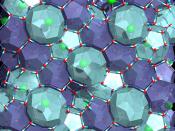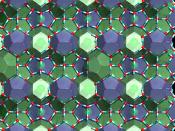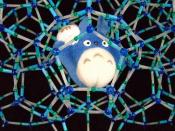INTRODUCTION Many salts that have been crystallized from water solutions appear to be perfectly dry, yet when heated they discharge large quantities of water. An example can be hydrated copper (II) sulfate. Exactly this salt is used in the described experiment. RESEARCH QUESTIONWhat is the number of moles of water of crystallization associated with one mole of copper (II) sulfate, in the hydrate CuSO4 * xH2O (s)? The independent variable in this experiment is sample thermal treatment ( heating and cooling) and the dependent variable is the number of moles of water of crystallization. A number of other variables can affect the final result of the experiment: whether the crucible was clean and dry before filling it with the salt, whether the sample was heated too strongly and cooled too long before weighting. HYPOTHESIS In the hydrate copper (II) sulfate one mole of salt is believed to be combined with five moles of water.
Bearing this in mind the following hypothesis was made: If the hydrate is heated until there is no further loss in weight, five moles of water will be lost from one mole of salt. THEORY When certain ionic solids crystallize from aqueous solutions, they combine with a definite amount of water, which becomes a part of the crystalline solid. Salts that contain water as part of their crystal structure are called hydrates (or hydrated salts) and the water in the crystal structure is called the water of hydration (or water of crystallization). When the water of hydration is removed from the hydrate, the salt that remains is said to be anhydrous. For a hydrate, the number of moles of water present per mole of salt is usually some simple, whole number. The formula for a hydrated salt is usually written as MN . x H2O,


